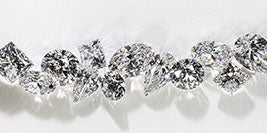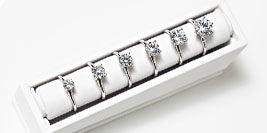Yes! It's a fact that lab diamonds are real diamonds, identical in every way (but the price!) to earth-mined diamonds. Except that MiaDonna’s lab-grown diamonds are better than 99% of all other diamonds, no matter their origin.
Not to be confused with cubic zirconia, moissanite, or a "look-a-like" diamond, grown diamonds are 100% pure crystallized carbon. Think of it as making ice in your modern-day freezer versus getting it from a glacier. Both are frozen H2O regardless of the origin.
We are crystalizing carbon into stunning rough diamonds that are then cut, polished, and graded just like earth-mined diamonds. Lab created diamonds carry the same optical, physical, and chemical properties. They have the same refractive index, dispersion, and hardness and are graded to the same standards as mined diamonds by leading independent gemological institutes, including the IGI, GIA, and GCAL.






























































